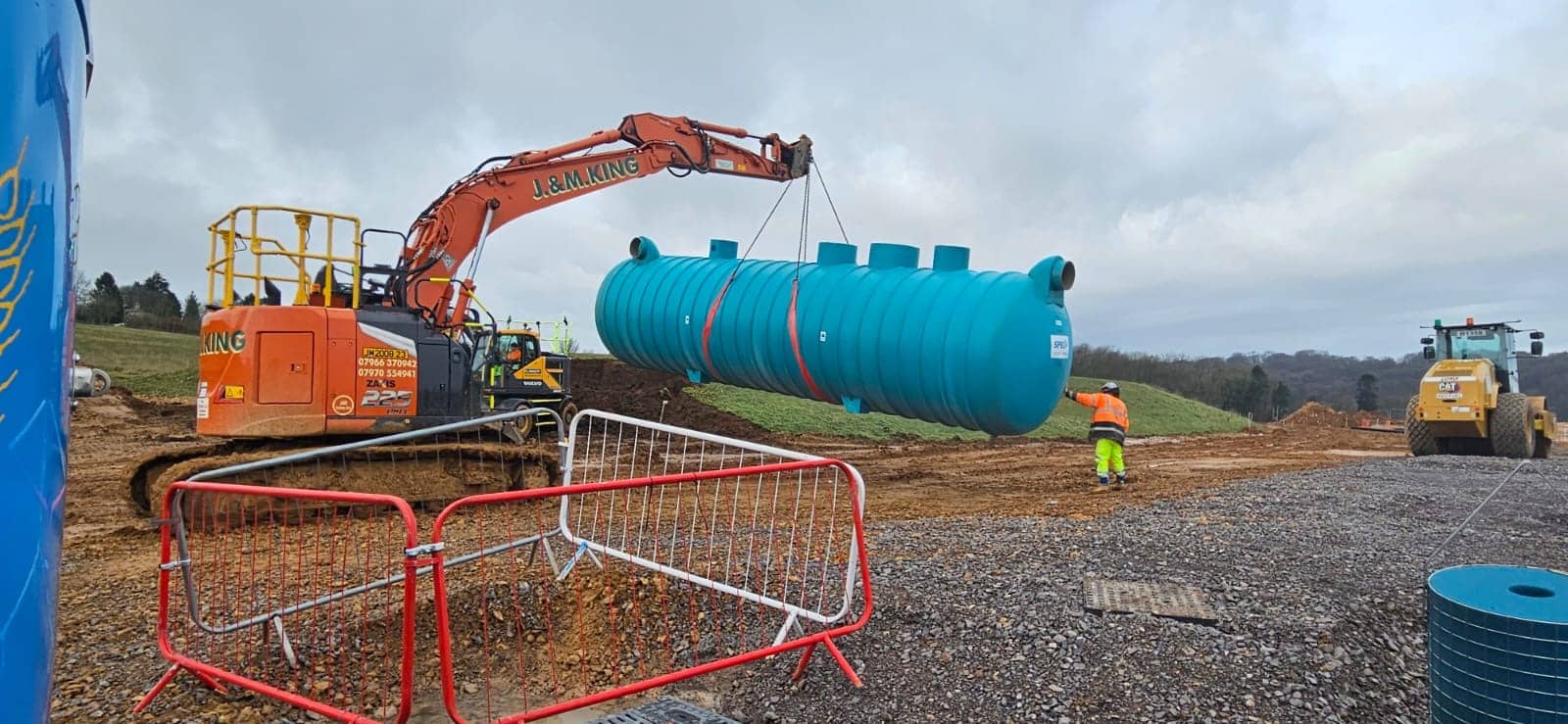In June, we saw the publication of the new, Non-Statutory National Standards for Sustainable Drainage Systems (SuDS). These new standards are intended to help developers and their consultants to design, maintain, and operate surface water drainage systems for new developments and retrofit SuDS. They have been published to promote consistency and to help ensure the long-term performance and resilience of surface water drainage.
You can read them here: https://www.gov.uk/government/publications/national-standards-for-sustainable-drainage-systems
Let’s explore the water quality elements of the new Standards and consider how they control pollution and ensure better quality water is flowing into our rivers and oceans.
Pollution Control
Overall, there are some excellent new clauses in the Standards, particularly around highway runoff and pollution control. Front and centre is the reminder in the ‘Introduction’ that ‘these standards only apply to the management of surface water runoff that is essentially uncontaminated and consists predominantly of rainwater. For some applications where there is a higher risk (for example, a large car park), the inclusion of proprietary measures as opposed, or in addition, to Nature based SuDS may be needed.’
This is excellent recognition of the need for pollution control devices to be included upstream of vegetative SuDS features; this requirement is already included in the CIRIA SuDS Manual, but it is often overlooked. By having it in the new SuDS Standards, designers and planners will be reminded of the need to include pollution control devices where necessary. This is further reinforced by Clause 4.5 of the Standard, which says that ‘SuDS features located in publicly accessible or visible locations shall be designed and maintained to provide a suitable quality of water for aesthetic and amenity reasons and to support biodiversity whilst being safe to the public and not environmentally polluting. Attenuated water should generally be clear, well oxygenated, avoid any strong or unpleasant odours or significant oil sheen, discolouration, or contain debris, excessive organic detritus or litter.’ This reminds designers that the stormwater running into SuDS devices cannot be so heavily polluted that it creates dirty, contaminated, wetted environments that smell and cause a nuisance to local people and wildlife. A SPEL Smartceptor or a SPEL ESR Treatment System are ideal devices to provide this protection, and to assure designers that raingardens and other natural features they include can become attractive habitats where wildlife can thrive.
This concept is embedded in Principle 5 of the Standards which states that opportunities should be maximised to help cleanse runoff prior to discharge to the water environment of diffuse particulate and chemical substances that may have been entrained.

Groundwater Protection
The new Standards are written to make sure that groundwater protection is valued too, and Clause 4.7 states that ‘Surface water runoff from land uses with a higher risk to surface and groundwaters are likely to require proprietary treatment products as part of the management train to ensure adequate treatment (for example, from large car parks or more heavily trafficked roads).’
It is reassuring to see that the Clause goes on to say that ‘these products shall be supported by sufficient evidence of their likely performance to the satisfaction of regulators to ensure they will provide the necessary treatment for the lifetime of the development with appropriate maintenance (for example, oil separators or vortex separators).’ This reminder that manufactured products should only be included in the SuDS design if their performance has been proven in independent testing and that their function can be assured for the design life of the SuDS scheme is a welcome update. SPEL’s SuDS Systems have all been 3rd party tested and accredited, and their pollution control performance can be verified with our various test certificates. The structural integrity of our product range is also proven and tested, and we can provide warranties that meet or exceed the design life of the scheme.

Highway Runoff
We are pleased to see the new Standards recognising that the pollution risk to surface water and groundwater from some land uses is so high that it is unlikely to be appropriate for them to drain to those surface waters or groundwaters using a ‘vegetative SuDS approach’. This is also clear from the introduction to the document, which states that ‘although these standards apply for developments which include road drainage, they are not intended to be applied to the trunk road network managed by National Highways. Equivalent provision for SuDS for these roads is contained in the Design Manual for Roads and Bridges.’ The pollutant load from trunk roads and motorways is sufficiently high that SuDS designs that rely wholly on nature-based systems to break down the pollutants are not adequate on their own, and that the pollution must be managed in a well-designed pollution control treatment device to capture the pollutants and to isolate them from the environment.

High-Flow Events
Once these pollutants have been captured, it is essential that they are not ‘flushed-out’ in high flow conditions, and the Standards address that concern in Clause 4.10, stating that ‘the surface water drainage design shall consider and mitigate the risks of sediments and associated chemical substances being remobilised into receiving waters during higher flow events. This is to minimise the washout of chemical substances as far as is reasonably practicable and ensure they are retained in the SuDS treatment device.’ It is reassuring to see this in the Standards, as the increase in heavy storm events means that our stormwater designs need to fully consider the risks of very high flows, and to mitigate those flows so that captured pollutants are not flushed downstream. The range of SPEL ESR Bypass treatment systems are ideal for this sediment management, as they bypass exceedance flows, so that there is no excessive turbulence, and the captured sediments are not resuspended.
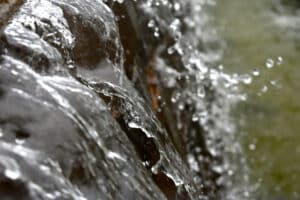
Containment of Spillages
Another new topic for the Standards is the containment of spillages and major incidents, reflected in Clause 4.11, where the need to intercept and contain a pollution incident in such a way that the captured pollution can be removed is set out. This provision has been largely overlooked in the past decades, and old manually operated penstocks are located around our old stormwater drains in the UK, where no one maintains them and where they cannot be found in the event of an incident. But the Standards have acknowledged this problem and embraced the availability of new, efficient, remotely operated pollution containment devices, and they should be deployed whenever necessary. This may include high-risk sites, such as discharges into protected habitats, and this may require the provision of penstocks or other proprietary measures.
Pollution containment and spillage interception can be provided for sites where the risk is associated with oil spills as the SPEL ESR Bypass and the ESR Full Flow systems are both certified to BS/EN 858 as well as the British Water Code of Practice SuDS test protocol. The ESR Full Flow system is further equipped with a SPEL ACD (Automatic Closure Device) that will shut down the system in the event of a catastrophic oil spill and capture the spill within the contained system, protecting the environment and wildlife from a pollution disaster.
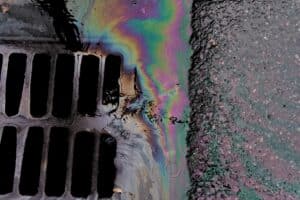
Operation and Maintenance
Its great to see that the New Standards don’t end with the design of the SuDS scheme; it goes on to cover the need for good construction, operation, and maintenance of the system. The construction of SuDS and the introduction of retrofit SuDS across British towns and cities over the last 20 years has highlighted the potential problems of SuDS that have been abandoned, and which no longer benefit the local community. There are SuDS devices from Camden to Cardiff that haven’t had money set aside for maintenance and that have fallen into disrepair and dereliction. Standard Clause 7 aims to prevent that from happening and includes a requirement for all new SuDS features to be included in a Register of Structures, held by the Lead Local Flood Authority. It requires that the designer provide details of all maintenance activities and all access details for the features and treatment devices. Although the source of funding for this maintenance has yet to be secured, and the mechanism by which these Standards will be delivered isn’t clear, it is good that they cover the entire life and function of the SuDS schemes, so that future SuDS can deliver all their potential benefits for decades to come. SPEL can provide Operation and Maintenance manuals for our range, to make this as simple as possible for operatives, whilst simply and cost-effectively laying out the maintenance procedure for the Lead Local Flood Authority.
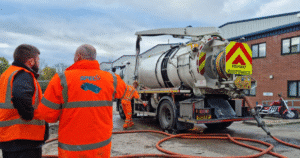
Permitting and Regulation
Finally, for water quality, the section on the Environmental Permitting Regulations is pivotal. This section states that ‘a permit is required if pollutants present within the effluent or wastewater result in, or might lead to, any indirect or direct input of that pollutant to groundwater. In these circumstances, formal water treatment measures are likely to be required. Sustainable drainage techniques may form part of this treatment process but are unlikely to be the principal treatment (for example, SuDS may be used for a final ‘polishing’ treatment or for attenuation prior to discharge to a surface water or groundwater body).’ This is long-overdue recognition that the level of pollution in stormwater from some urban surfaces is sufficiently polluted that its discharge constitutes a Water Discharge Activity for the purposes of these Regulations. That particularly applies to highway runoff that contains dissolved copper and zinc, along with hydrocarbons and tyre-wear particles. These discharges of runoff from high-risk urban surfaces may need a Permit, or they may be treated adequately by hybrid-SuDS, including proprietary treatment devices, but it is clear that this must be considered, and there is still a possibility that a well-designed SuDS scheme may need to be controlled using an Environmental Permit. The SPEL Products SuDS stormwater treatment range includes an array of treatment devices that can deliver reliable treatment and compliance with Permit conditions for urban stormwater.
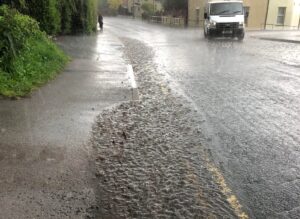
Summary
All in all, the new Standards are excellent for the control of pollution from urban stormwater. They fully recognise the risks and include all the necessary protections to control those risks. All we need now is for the Department for Environment, Food & Rural Affairs (DEFRA) and the Ministry of Housing, Communities and Local Government (MHCLG) to agree on the vehicle for the delivery of these Standards. As an industry, we have long advocated for the enactment of Schedule 3 of the Floods and Water Management Act, but it looks as if the current government favours the delivery of these Standards via the Planning Framework. We can only hope that the Planning Framework is ‘beefed-up’ so that SuDS are applied consistently across all Planning Authorities, and funding mechanisms are in place to pay for their maintenance and operation in the future. If these Standards can be applied and enforced as they stand, that will represent a significant shift forward in pollution prevention and will deliver widespread improvements in river health across the country.

